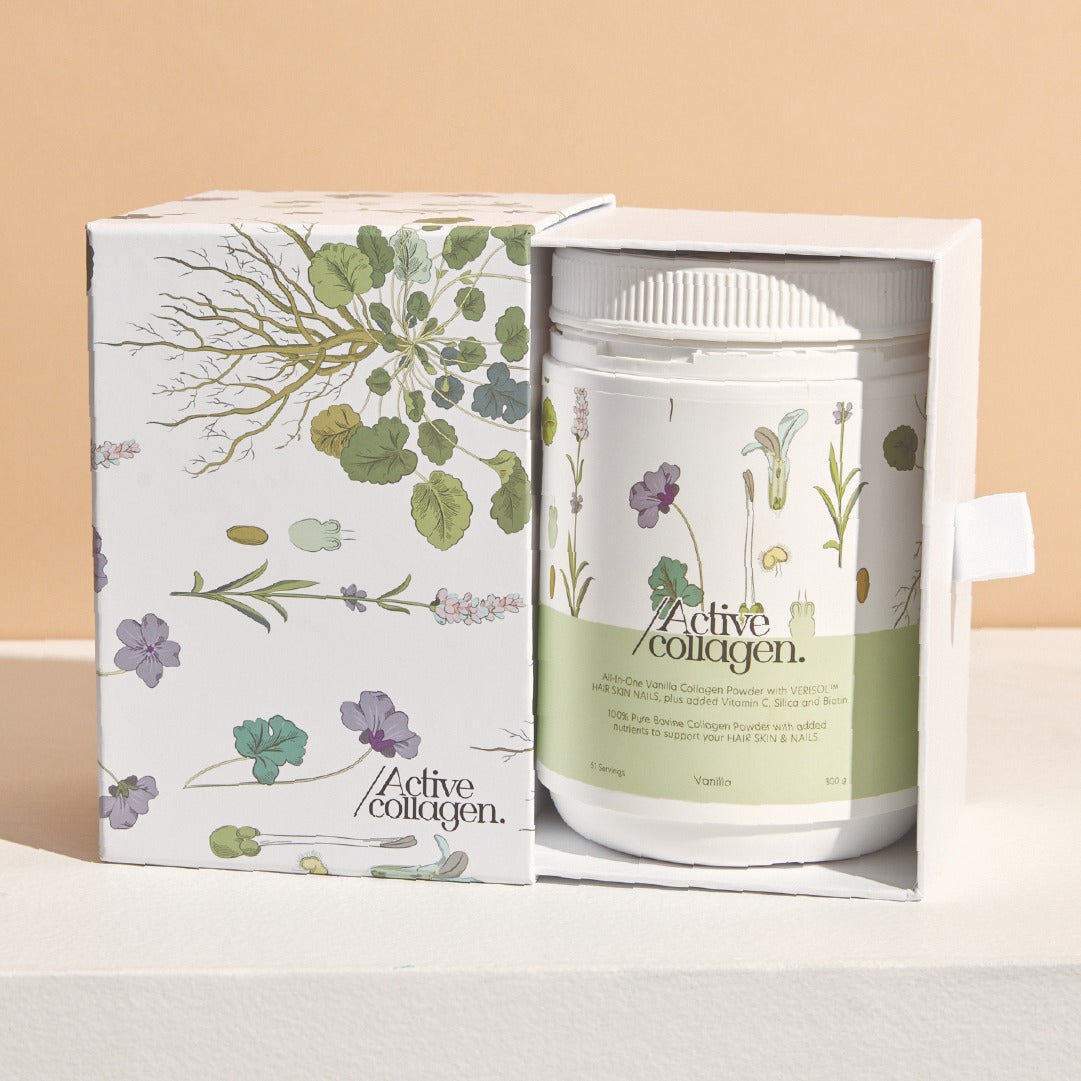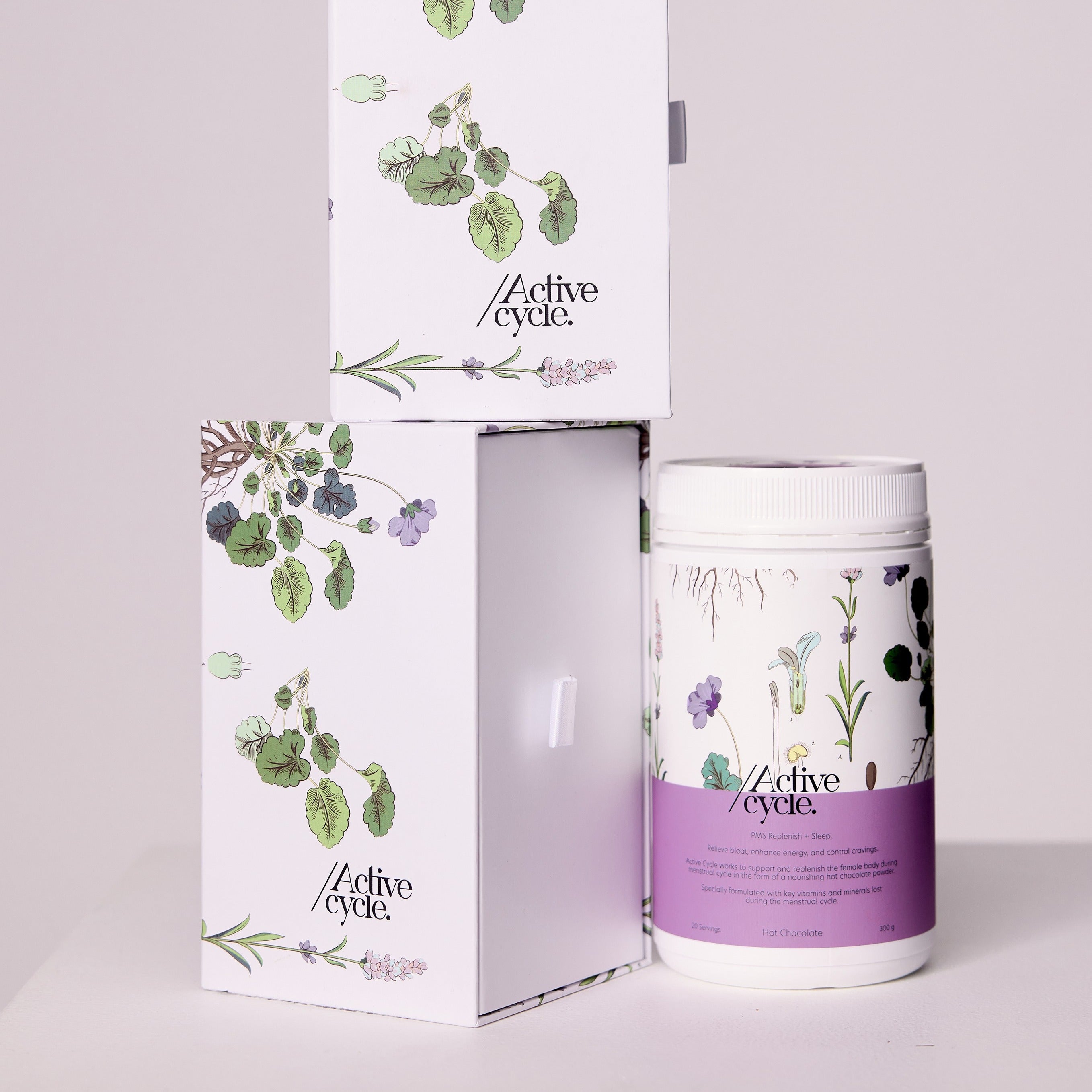During pregnancy there is a whole lot of change happening in a woman’s body - expanding bellies, increased cravings and heavier breasts. There are, however, specific physiological changes which develop during pregnancy that aren’t as obvious as a growing belly.
Many women experience various skin changes or dermatoses that pop up during pregnancy and breastfeeding. These include changes in skin pigmentation, nails, acne and stretch marks. Although some may experience one, none, or all of these changes, pregnancy is a time where over 90% of women encounter skin changes which may have a significant impact on their life.
Due to the large influence that hormonal changes in pregnancy have on developing common dermatoses, it is likely that changes will resolve during the postpartum period. However, there are particular nutrients you can incorporate throughout your pregnancy and postpartum journey to support the restoration and overall health of your skin.
Hyperpigmentation
Hyperpigmentation is one that raises a lot of concern for women during pregnancy. Skin pigment is controlled by the synthesis and distribution of melanin produced by melanocytes in our skin. During pregnancy, there are changes to melanin pigment production due to increased levels of melanocyte-stimulating hormone and oestrogen which are the guilty players in common pigment conditions. Melasma (dark and irregular patches of skin) and Linea nigra (a line of darker pigmentation descending and/or ascending from the belly button) are the most commonly seen hyperpigmentation conditions in pregnancy.
Vitamin C is a powerhouse vitamin when it comes to protecting and increasing the integrity of our skin. Its many roles in the skin include collagen synthesis, photoprotection from UV rays, immune defence and eliminating hyperpigmentation. In depigmentation, vitamin C’s direct effect is with reducing melanin production due to its strong antioxidant capacity. Vitamin C acts on an enzyme (tyrosinase) to prevent its action which would normally start the production of melanin. Try incorporating more vitamin C rich foods such as citrus, kiwi fruit, berries, tomatoes, potatoes or even just a squeeze of lemon on your salad can do wonders!
Also, there has been various research surrounding the use of collagen peptides in reducing skin pigmentation. Collagen is the most abundant protein in the skin and our bodies. After ingestion of collagen peptides, the smaller amino acids such as proline, glycine and hydroxyproline are transported to the skin through blood where it stimulates cell growth, repair and regulates skin cells such as melanocytes. One study regarding the ingestion of 5g/day of collagen peptides found significant reduction in skin hyperpigmentation, such as spots from UV radiation, following 1-3 months of intake.
Nails
Development of brittle nails is often experienced during pregnancy. This may be seen as developing fungal nail infections such as onychomycosis or purely just experiencing nails that easily break. Although most nail dermatoses are harmless, certain topical and oral medications prescribed are not suitable during pregnancy. There are, however, two nutrients that are game changing for your nail health.
Biotin – a nutrient that is linked to improving nail health, especially brittle nails, where deficiency is also seen in those with dermatitis and alopecia. A clinical study has shown that daily supplementation (2.5mg) of biotin decreases nail dermatoses. Foods that contain high amounts of biotin include nuts, grains, meat, eggs and fish, although avoid high mercury fish in pregnancy.
Silica (silicon) – one of the most abundant elements in the body and the most prominent in our nails, it is no wonder silicon is suggested for increasing nail health. The same clinical study involving biotin suggested that daily supplementation with silicon (10mg) can improve nail appearance and strength. In foods, silicon is mainly found in the form of silicon dioxide or silicates which naturally occur in both plant and animal sources. Though, silicon is mainly ingested from cereals, fruits and vegetables.
Acne
Acne vulgaris frequently affects both pregnant and lactating women, pinpointed as most severe during trimesters 2 and 3. It can arise during this time after long acne-free periods or for the first time (often most uncommon) as a response to both the physiological and hormone changes occurring during pregnancy. Often, this leads to an increase in sebaceous gland secretions – those that produce oils – in the later stages of pregnancy. Commonly prescribed acne treatments are, however, contraindicated in pregnancy and natural treatments are more favourable. And we love natural!
Vitamin C – our favourite little antioxidant – is a noteworthy vitamin recommended for preventing or alleviating acne, and may also increase other acne treatment effectiveness due to its powerful anti-inflammatory properties. At the same time, vitamin C is also beneficial during pregnancy for reducing the risk of complications such as pre-eclampsia. Plus, who wouldn’t want to eat berries every day?
Stretch Marks
It has been estimated that between 55-90% of pregnant women experience stretchmarks – or striae gravidarum. Stretch marks are often distressing for women as it is likely they may stick around post pregnancy. They appear parallel to skin tension, at first pink in colour fading to white marks, which most often present on thighs, breasts, the abdomen and hips. Although it is more common to develop stretch marks during the 2nd and 3rd trimesters, one study showed that over 40% of women notice stretch marks before 24 weeks.
Of course, during pregnancy it is highly likely you cannot prevent the additional stretching of the skin. Though, the development of stretch marks can be helped by our good friend collagen. This is due to the underlying development of stretch marks being caused by abnormalities in connective tissue components such as collagen.
Luckily here at Active Collagen we’ve cultivated a collagen supplement that stands out from the rest. Active Collagen All-In-One Hair Skin & Nails says it all in the name, it’s made to support all three! With added biotin, silicon dioxide, vitamin C (ascorbic acid) and a generous dose of hydrolysed collagen per scoop, it’s an easy and effective way of getting in these important nutrients to support skin dermatoses.
*Collagen is marked safe for consumption during pregnancy.
Vora, R. V., Gupta, R., Mehta, M. J., Chaudhari, A. H., Pilani, A. P., & Patel, N. (2014). Pregnancy and skin. Journal of family medicine and primary care, 3(4), 318–324. https://doi.org/10.4103/2249-4863.148099
Moreiras, H., Seabra, M. C., & Barral, D. C. (2021). Melanin Transfer in the Epidermis: The Pursuit of Skin Pigmentation Control Mechanisms. International journal of molecular sciences, 22(9), 4466. https://doi.org/10.3390/ijms22094466
Sanadi, R. M., & Deshmukh, R. S. (2020). The effect of Vitamin C on melanin pigmentation - A systematic review. Journal of oral and maxillofacial pathology : JOMFP, 24(2), 374–382. https://doi.org/10.4103/jomfp.JOMFP_207_20
Himeno, A., Tsujikami, M., Koizumi, S., Watanabe, T., & Igase, M. (2022). Effect of Reducing Pigmentation by Collagen Peptide Intake: A Randomized, Double-Blind, Placebo-Controlled Study. Dermatology and therapy, 12(7), 1577–1587. https://doi.org/10.1007/s13555-022-00748-4
Falotico, J. M., & Lipner, S. R. (2022). Updated Perspectives on the Diagnosis and Management of Onychomycosis. Clinical, cosmetic and investigational dermatology, 15, 1933–1957. https://doi.org/10.2147/CCID.S362635
Scheinfeld, N., Dahdah, M. J., & Scher, R. (2007). Vitamins and minerals: their role in nail health and disease. Journal of drugs in dermatology : JDD, 6(8), 782–787. https://pubmed.ncbi.nlm.nih.gov/17763607/
National Health and Medical Research Council. (2006). Biotin. Nutrient Reference Values. https://www.eatforhealth.gov.au/nutrient-reference-values/nutrients/biotin
Araújo, L. A., Addor, F., & Campos, P. M. (2016). Use of silicon for skin and hair care: an approach of chemical forms available and efficacy. Anais brasileiros de dermatologia, 91(3), 331–335. https://doi.org/10.1590/abd1806-4841.20163986
Ly, S., Kamal, K., Manjaly, P., Barbieri, J. S., & Mostaghimi, A. (2023). Treatment of Acne Vulgaris During Pregnancy and Lactation: A Narrative Review. Dermatology and therapy, 13(1), 115–130. https://doi.org/10.1007/s13555-022-00854-3
Podgórska, A., Puścion-Jakubik, A., Markiewicz-Żukowska, R., Gromkowska-Kępka, K. J., & Socha, K. (2021). Acne Vulgaris and Intake of Selected Dietary Nutrients-A Summary of Information. Healthcare (Basel, Switzerland), 9(6), 668. https://doi.org/10.3390/healthcare9060668
Farahnik, B., Park, K., Kroumpouzos, G., & Murase, J. (2016). Striae gravidarum: Risk factors, prevention, and management. International journal of women's dermatology, 3(2), 77–85. https://doi.org/10.1016/j.ijwd.2016.11.001
Choi, F. D., Sung, C. T., Juhasz, M. L., & Mesinkovsk, N. A. (2019). Oral Collagen Supplementation: A Systematic Review of Dermatological Applications. Journal of drugs in dermatology : JDD, 18(1), 9–16. https://pubmed.ncbi.nlm.nih.gov/30681787/




